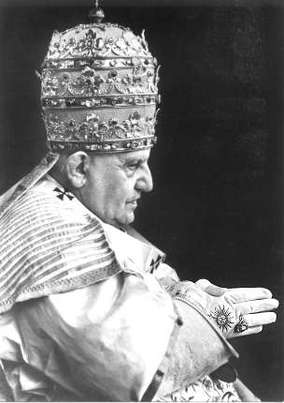 In 2009 I wrote a review of the book, The Catholic Handbook for Visiting the Sick and Homebound. The 2011 edition is now available for use beginning on November 28th, the First Sunday of Advent 2010. Liturgy Training Publications is the publisher. This resource is a good deal for $6.00, discounts for bulk orders.
In 2009 I wrote a review of the book, The Catholic Handbook for Visiting the Sick and Homebound. The 2011 edition is now available for use beginning on November 28th, the First Sunday of Advent 2010. Liturgy Training Publications is the publisher. This resource is a good deal for $6.00, discounts for bulk orders.
Latin in New Zealand???
I suppose Latin is no longer taught in New Zealand. Read this article …
Komen Foundation supports Planned Parenthood, abortion mill
 Too many women, too many friends, have or have had, breast cancer. Just the other day in the local newspaper there was an obit for a young woman who died of breast cancer at 43 years. Her battle with an ugly disease captured my prayer for that day. It drew to intensify my own resolve to work in simple ways to work for a cure but my angle is the spiritual battle; first petitioning the patron saint of those living with diseases of the breast, Saint Agatha. (If you’re a Communio reader you might remember attention focussed on Saint Agatha’s spiritual patronage for breast cancer survivors especially in February.)
Too many women, too many friends, have or have had, breast cancer. Just the other day in the local newspaper there was an obit for a young woman who died of breast cancer at 43 years. Her battle with an ugly disease captured my prayer for that day. It drew to intensify my own resolve to work in simple ways to work for a cure but my angle is the spiritual battle; first petitioning the patron saint of those living with diseases of the breast, Saint Agatha. (If you’re a Communio reader you might remember attention focussed on Saint Agatha’s spiritual patronage for breast cancer survivors especially in February.)
Saint Edward the Confessor
 Hail to You, Christ, Prince of Peace!
Hail to You, Christ, Prince of Peace!
Health Care Reform: What is it all about? –a Crossroads Cultural Center presentation
 Each year, the lay ecclesial movement, Communion and Liberation (CL) in NY suggests a particular Crossroads Cultural Center (NYC) event that has a particular significance, seriousness, and the weight because of its potential impact on our lives.
Each year, the lay ecclesial movement, Communion and Liberation (CL) in NY suggests a particular Crossroads Cultural Center (NYC) event that has a particular significance, seriousness, and the weight because of its potential impact on our lives.
There is one event in the Crossroads program which CL wants to underline and encourage everyone not only to attend but also to put effort into getting the word out among fellow parishioners, co-workers, family, etc.
This year, it is an event, October 13, at 7pm at Columbia University, entitled “Health Care Reform: What is it all about?” Below is an excerpt from the Crossroads website.
The distinguished panel of speakers will help us to understand better what practical consequences we should expect from the new health care law and its implementation. To a large extent, the debate on health care reform has been shaped by “experts,” both from the academic world and from various think-tanks and professional associations. The idea behind this discussion is to ask a group of experienced professionals whose work is related to health care how the new law will concretely impact their work, and the health care system as they know it in their field of action. As a general rule, experience is the best immunization against the temptations of ideology. In the case of health care reform these temptations include both the utopian conviction that this huge social problem can basically be solved by technocratic means (i.e., government action) and the opposite prejudice, namely that nothing good can come from governmental intervention in the health care system as prescribed by the reform. Rather than joining this stale ideological struggle, we want to listen to those who will deal every day with the effects of the reform, as the best to way to learn what we should realistically expect.
The most important thing is that we take this event seriously as a personal invitation to come to know more about something in reality as it’s unfolding now. It’s in reality that the Divine Mystery speaks to us. We cannot simply ignore the questions and problems our society faces and claim to be above them. It’s in facing reality, struggling with it, and involving ourselves with it, that we can come to know Christ more.
The presentation info:
Wednesday, October 13, 2010 at 7 pm
Columbia University, Philosophy Hall 301
1150 Amsterdam Avenue at 116th Street
The flyer for the event is posted here: Health Care Reform.pdf
New Papal document: Ubicumque et Semper (Everywhere and always) making a Vatican Office for the New Evangelization
The Holy Father published a long-awaited Motu Proprio, Ubicumque et semper, by which he established a new office (dicastery) at the Roman Curia: “Pontifical Council for Promotion of the New Evangelization.” The new head of the Council is, as you know, Archbishop Rino Fisichella.
The objectives of the new Pontifical Council:
- To deepen the theological and pastoral meaning of the new evangelization.
- To promote and to foster in close collaboration with bishops’ conferences, teaching of the Magisterium relative to the new evangelization.
- To make known initiatives already under way in local churches and to promote new initiatives, involving also resources of religious institutes and groups of the faithful and new lay communities;
- To study and to foster the use of modern means of communications as instruments for the new evangelization.
- To promote the Catechism of the Catholic Church.
A summary of Ubicumque et semper can be read here.
I am happy that a papal document finally appeared since it was expected since four months ago. Now a more concerted effort at the needs of evangelization will be worked on by the Roman Curia and that good works already in play with groups like Communion and Liberation, Opus Dei, Focolare, Sant’Egidio will be more coordinated and collaborated with. I hope the big religious orders like the Benedictines, Franciscans and Dominicans will respond positively to the hopes and desires of the Pope. The expectation of the new Council are looking to re-energize the work of evangelization of culture and to give renewed interest and thrust of the Church as missionary. Please note, secularism, not secularity needs to be addressed by the entire Church, not just the bishops and certainly not just the Roman Curia.
The Pope said, “At the root of all evangelization there is no human project of expansion, but the desire to share the priceless gift that God wished to give us, sharing His life with us.”
There are, however, a number of missed opportunities already since the announcement of the Council: there was a too long of wait for the motu proprio, the motu proprio is only available in Latin and Italian at this point, the staff has not been announced, and there is no web presence for the new Council as of yet. Another example of not doing the homework on the part of those who work for the Pope.
Blessed John XXIII
 Today we are given Blessed John XXIII as a model of holiness. Pope Blessed John’s liturgical memorial is not the date of his death but the anniversary of the opening of the Second Vatican Council.
Today we are given Blessed John XXIII as a model of holiness. Pope Blessed John’s liturgical memorial is not the date of his death but the anniversary of the opening of the Second Vatican Council.
Synod of Bishops for the Middle East
The Synod meets from October 10-24.
Mary is the model of Christian life, pope reminds
In his pastoral visit to Sicily last week the Holy Father called to mind the beauty and the place of the Mother of God in our lives: she’s an intensely loving mother who truly looks after her children. Here are some excerpts:
of God who live in this beloved land. May she sustain the families in love and
in educational commitment; may she fructify the seeds of vocation that God
liberally sows among the young people; may she instill courage in trials, hope
in difficulties, renewed strength in doing the good. May the Madonna comfort
the sick and all those who are suffering, and help the Christian communities so
that no one in them be forgotten or in need, but that each one, especially the
little and the weak, feel welcomed and valued.”
is being beatified. In 19th century she was an exemplary wife and mother and
then, having become a widow, she dedicated herself to charitable work among
women in prison and in difficulty, for whose service she founded two religious
institutes. Mother Adorni, because of her constant prayer, was called the
“Living Rosary.” I am glad to mention her at the beginning of the
month of the rosary. May the daily meditation on the mysteries of Christ in
union with Mary, the prayerful Virgin, strengthen us in faith, in hope and in
charity.”
2010
Abbot Timothy Kelly, OSB, RIP
 The monastic family of Saint John’s Abbey and the American Cassinese Congregation mourns the passing of Abbot Timothy Kelly who died on October 7. He was 76 and had been suffering from cancer.
The monastic family of Saint John’s Abbey and the American Cassinese Congregation mourns the passing of Abbot Timothy Kelly who died on October 7. He was 76 and had been suffering from cancer.
